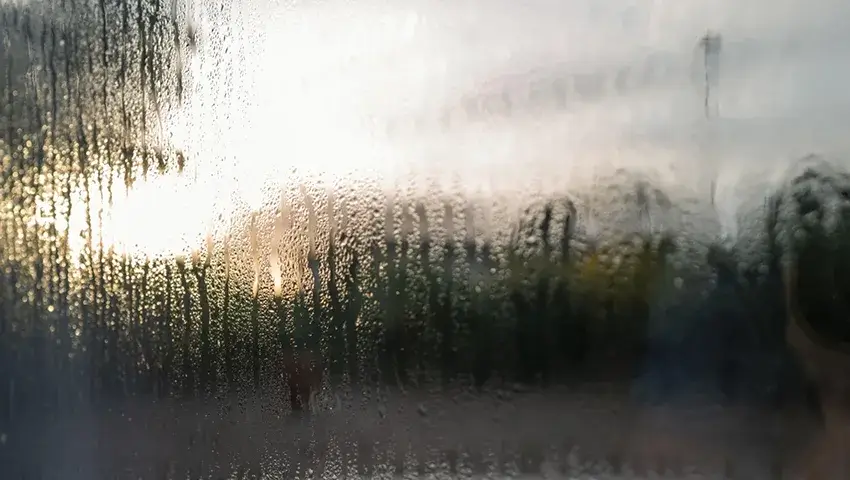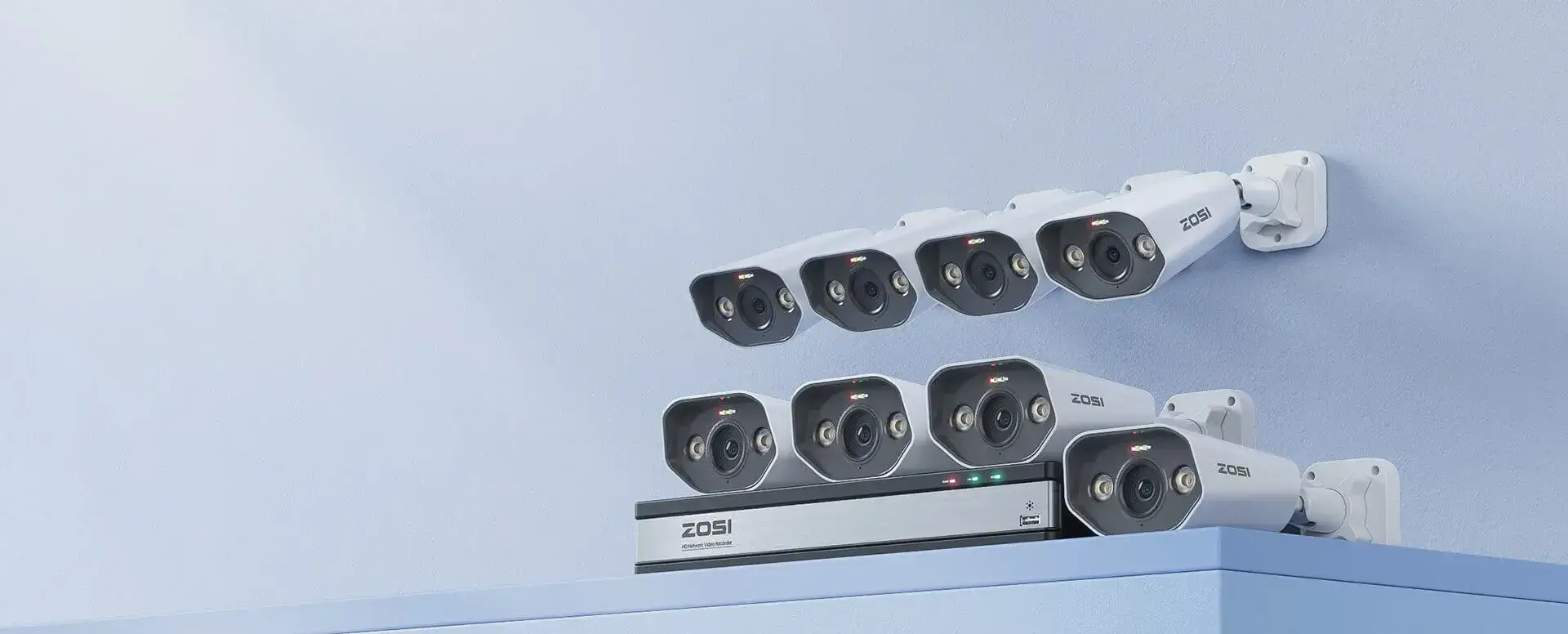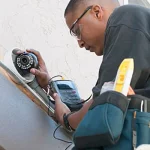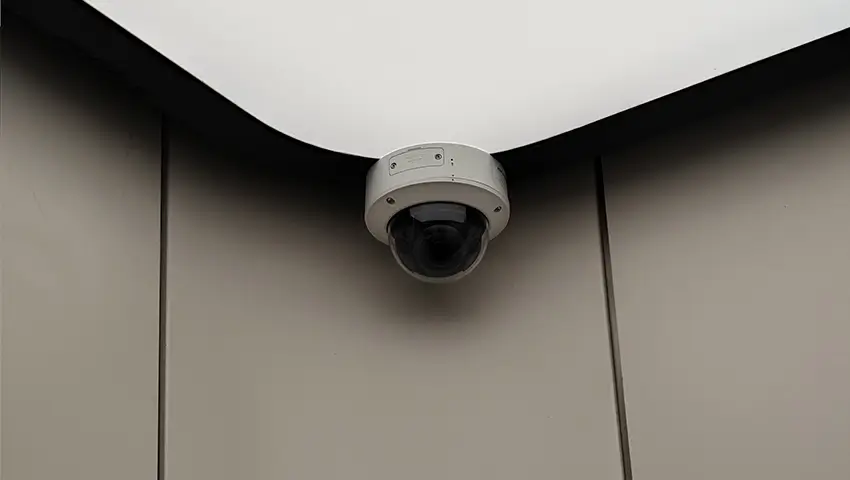Security camera condensation can cause several issues such as blurry images, mist-covered lenses, and recordings that capture nothing but fog. Furthermore, if left unaddressed, it can even corrode outdoor CCTV cameras and cause permanent damage. To prevent security cameras from fogging up, we have compiled a list of the 10 most effective solutions to remove condensation from outdoor IP security cameras.
Here’s the important information to deal with security camera condensation:
Contents
What Causes Security Camera Condensation?
“My outdoor IP camera becomes blurry during the night but clears up after sunrise. Could this be due to condensation in the security camera?”
Security camera condensation is similar to a ghost that only appears at night and disappears during the day.
So, how does a security camera condensation issue arise?
1. Security Cameras Are Not Completely Sealed
Poor sealing or inadequate quality is a significant contributor to condensation in security cameras. For instance, some outdoor CCTV cameras may not meet their stated water-resistance standard.
Using inferior security cameras outdoors makes you more susceptible to CCTV camera condensation issues than opting for qualified products from trusted security camera brands.
2. Significant Temperature Fluctuations Occur Daily
Condensation can form inside a security camera when warm, humid air comes into contact with its cold surfaces, particularly if there are significant temperature changes during the day.
Typically, late summer and autumn are prime periods for security camera condensation due to noticeable temperature fluctuations between day and night.
3. CCTV Cameras are Regularly Subjected to Harsh Weather Conditions
Inappropriate installation locations can cause CCTV camera condensation issues, even for qualified waterproof security cameras.
For instance, if your CCTV cameras are continually exposed to heavy rain, storms, and other severe weather conditions without any protection, they may not withstand water penetration over time, leading to blurry images.
For more information, please refer to this guide on how to protect outdoor security cameras from extreme weather.
4. IP Cameras for Indoor Use Only Installed Outdoors
Another potential cause of security camera condensation is the inadvertent installation of an indoor CCTV camera for outdoor use.
To prevent condensation, it is advisable to use IP65+ IP cameras if you intend to install them in open-air settings.
Top 7 Solutions for Eliminating Condensation from Security Cameras
Condensation inside a security camera can render recordings useless during a long night.
To eliminate fog from outdoor security cameras, here are some practical solutions to consider:
1. Use a Microfiber Cloth to Wipe Away Condensation from Security Cameras
To eliminate security camera condensation, you can wipe the outer lens covers (not the lenses) with a microfiber cloth that won’t leave any water spots.
Another effective method is to use a hair dryer to gently heat up the camera, which will clear away the fog in no time.
2. Utilize Anti-Fog Spray on Security Camera Covers
If security camera condensation problems often arise, it’s advisable to apply a layer of anti-fog spray to the outer lens cover.
Regularly using this spray helps protect outdoor security cameras from condensation issues.
3. Seal Security Cameras in Waterproof Boxes
Waterproof containers offer effective solutions for managing condensation in IP security cameras, particularly in areas prone to heavy rainfall and severe storms.
Additionally, it is important to consider ventilation: Create a hole in the containers and use water-resistant materials to cover it.
4. Remove the Dome Security Camera Covers & Eliminate Condensation
If condensation is present inside dome security cameras, it is advisable to relocate the outdoor CCTV cameras indoors before removing the outer lens covers.
Next, carefully wipe away the condensation using a micro-fiber cloth or hair dryer. These tools will ensure that no water marks are left on the lens covers, preserving the image quality of the dome security cameras.
Following the cleaning process, it is recommended to reseal the security cameras by firmly pressing the foam ring against the glass and applying waterproof gel to all the seals and gaskets.
By taking these steps, you can prevent future issues with condensation in dome security cameras.
Please note: This action may void the security camera warranty.
5. Incorporate Silica Gel/Desiccants into Outdoor IP Security Cameras
To prevent the occurrence of fog on security cameras during nighttime, another effective method is to insert a small packet of silica gel into the outdoor CCTV cameras.

These desiccant materials possess the ability to eliminate moisture and dehumidify the air, thus preventing condensation issues in CCTV cameras.
Editor’s Note: It is advisable to consult the support team or professionals from the security camera brand and confirm whether it is permissible to insert silica gel into the camera, as this action may void the security camera warranty.
6. Integrate Heaters/Blowers into Outdoor CCTV Cameras
In conjunction with the utilization of silica gel, one can also incorporate heaters or blowers into outdoor security cameras to prevent condensation.
However, the installation of heaters should be carried out by individuals possessing sound knowledge and expertise in handling electronic appliances.
7. Seek Additional Assistance from Customer Support
Apart from attempting to resolve condensation issues in dome security cameras independently, reaching out to customer support for assistance is another viable option.
Effective Ways to Remove Condensation from Security Cameras
Don’t let condensation ruin your investment in security cameras. Here are three helpful tips to prevent and eliminate condensation issues:
1. Opt for Security Cameras from Reputable Brands
When purchasing security cameras, make sure to choose from top-rated brands known for their reliable products and excellent customer service. These brands often have responsive support teams and offer long warranty periods, ensuring that any condensation problems can be promptly resolved without additional costs.
These brands often have responsive support teams and offer long warranty periods, ensuring that any condensation problems can be promptly resolved without additional costs.
4K POE Surveillance Cameras Security Monitor Systems
- Smart Person/Vehicle Detection
- Customize Detection Zone
- 4K Starlight Night Vision
- 24/7 Video & Audio Recording
- Access Remotely & Flexibly
- Two Way Audio
2. Consider Temperature and Humidity
Before finalizing your purchase, carefully review the working temperature and humidity specifications of the security cameras, especially if you reside in cold regions or areas with extreme weather conditions.
Additionally, ensure that the cameras are suitable for both indoor and outdoor use. Look for outdoor CCTV cameras with weather-proof ratings of IP65 or higher to ensure they can withstand any weather conditions.
3. Implement Effective Solutions
Implement effective solutions to remove condensation from your security cameras. This may include using silica gel packs or desiccant bags in the camera housing, installing a heater or fan to regulate the temperature, or using anti-fogging solutions specifically designed for camera lenses.
These steps will help keep your security cameras clear and free from condensation, ensuring optimal performance and longevity.
4. Exercise Caution in Selecting Installation Locations
Even if you have invested in waterproof surveillance cameras, it is still essential to exercise caution when choosing appropriate spots for installation.
When outdoor CCTV cameras are exposed directly to sunlight or various weather conditions without any protective coverings, the likelihood of encountering issues with condensation significantly increases.
Optimal installation positions for security cameras include:
- Beneath the soffit or eave
- At the front entrance
- On the porch
- Inside the garage
- At the back entrance
- By an off-street window






